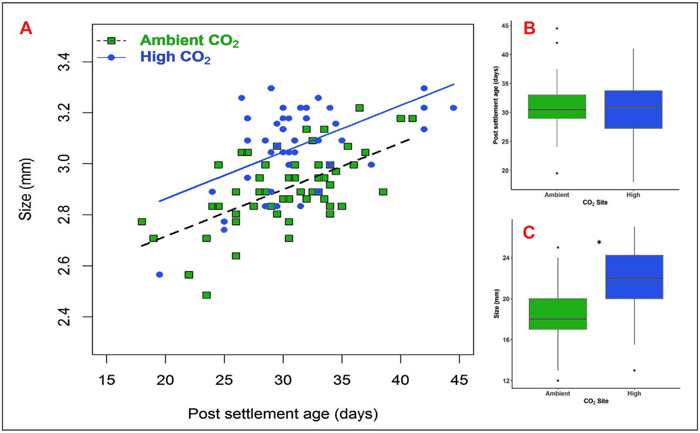| Follow @co2science |
Paper Reviewed
Cattano, C., Calò, A., Di Franco, A., Firmamento, R., Quattrochi, F., Sdiri, K., Guidetti, P. and Milazzo, M. 2017. Ocean acidification does not impair predator recognition but increases juvenile growth in a temperate wrasse off CO2 seeps. Marine Environmental Research 132: 33-40.
In general, fish are expected to be particularly resilient to elevated partial pressure of CO2 (pCO2) in seawater, i.e., ocean acidification, given their ability to actively regulate ionic concentrations in their body compartments to ensure efficient acid-base regulation in a declining pH environment. The latest study in support of this phenomenon comes from the work of Cattano et al. (2017).
Working with juvenile ocellated wrasse (Symphodus ocellatus), a nesting wrasse that is widespread in the rocky Mediterranean subtidal zone, the researchers designed an experiment to examine the impact of pCO2 levels on the wrasses' growth and development, as well as their ability to recognize and respond to the odor of a common predator (painted comber, Serranus scriba). The experiment was carried out on juveniles inhabiting a natural pCO2 seawater gradient off the coast of Italy, where approximately half of the individuals developed in present day pCO2 conditions (~400 µatm) and half under pCO2 conditions anticipated for the future (~750 µatm).
Results of this analysis revealed what the authors describe as "a significant effect of CO2 levels on fish size: the age being equal, post-settlers tend to be bigger in body size in high pCO2 conditions." Indeed, as indicated in the figure below, fish in the high pCO2 habitat were 18% larger (21.8 mm vs 18.5 mm) than fish in the low pCO2 habitat.
With respect to their behavioral response to a predator, Cattano et al. report that "fish from both CO2 sites avoided the water with the predator cue in a similar way," such that "the time spent in seawater with predator odor by S. ocellatus post-settlers was significantly shorter than the time spent in seawater without predator cue, with no difference among [pCO2] treatments."
Consequently, in light of their observations, the eight researchers conclude that their study "provides evidence that CO2 levels predicted for the next decades will not affect the ability of S. ocellatus post-settlers to recognize their predator, whereas their somatic growth will increase." Given as much, Cattano et al. speculate that "by increasing [their] body size, juvenile [ocellated wrasse] might more efficiently avoid their predators."

Figure 1. (Panel A) The relationship between post-settlement age and their size in the two CO2 sites (Ambient and High). Panels B and C show boxplots (median, box 25 and 75 percentile, whisker 10 and 90 percentile) of post-settlement age and size of fish at catch, respectively, collected from the two CO2 sites. The horizontal bar in each boxplot represents the median. (n = 55 in Ambient pCO2 and n = 44 in High pCO2). The asterisk indicates significant differences. Source: Cattano et al. (2017).




